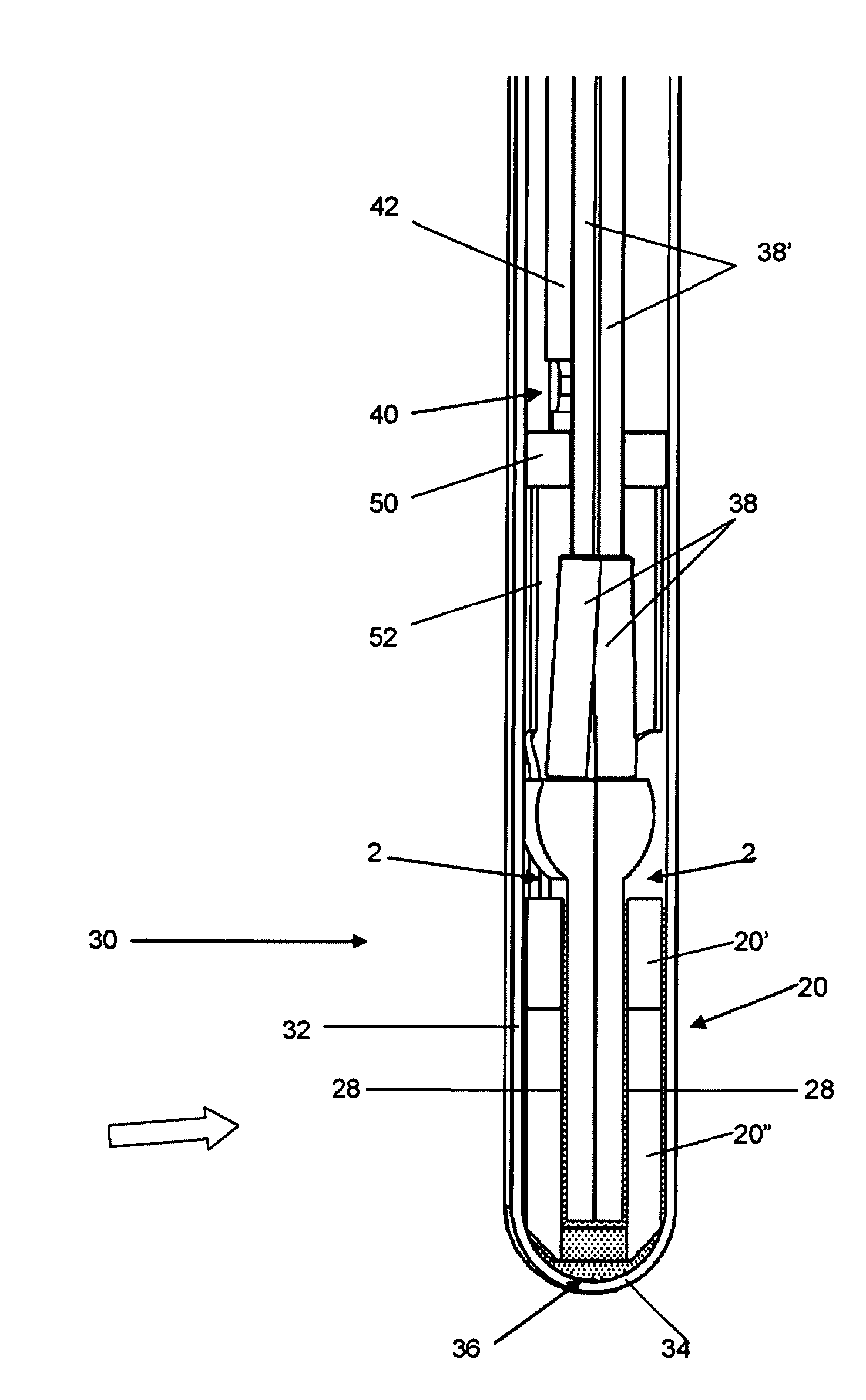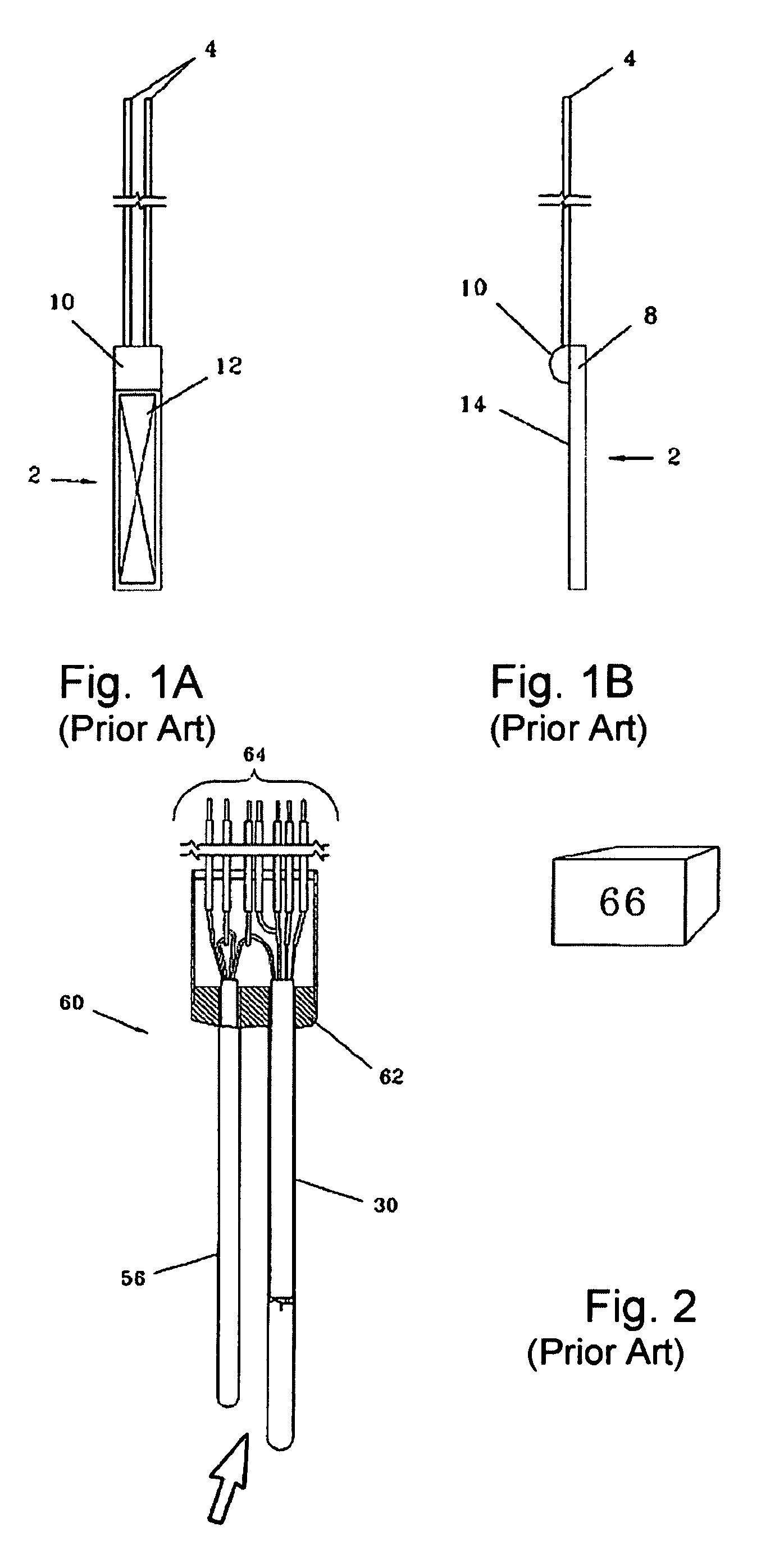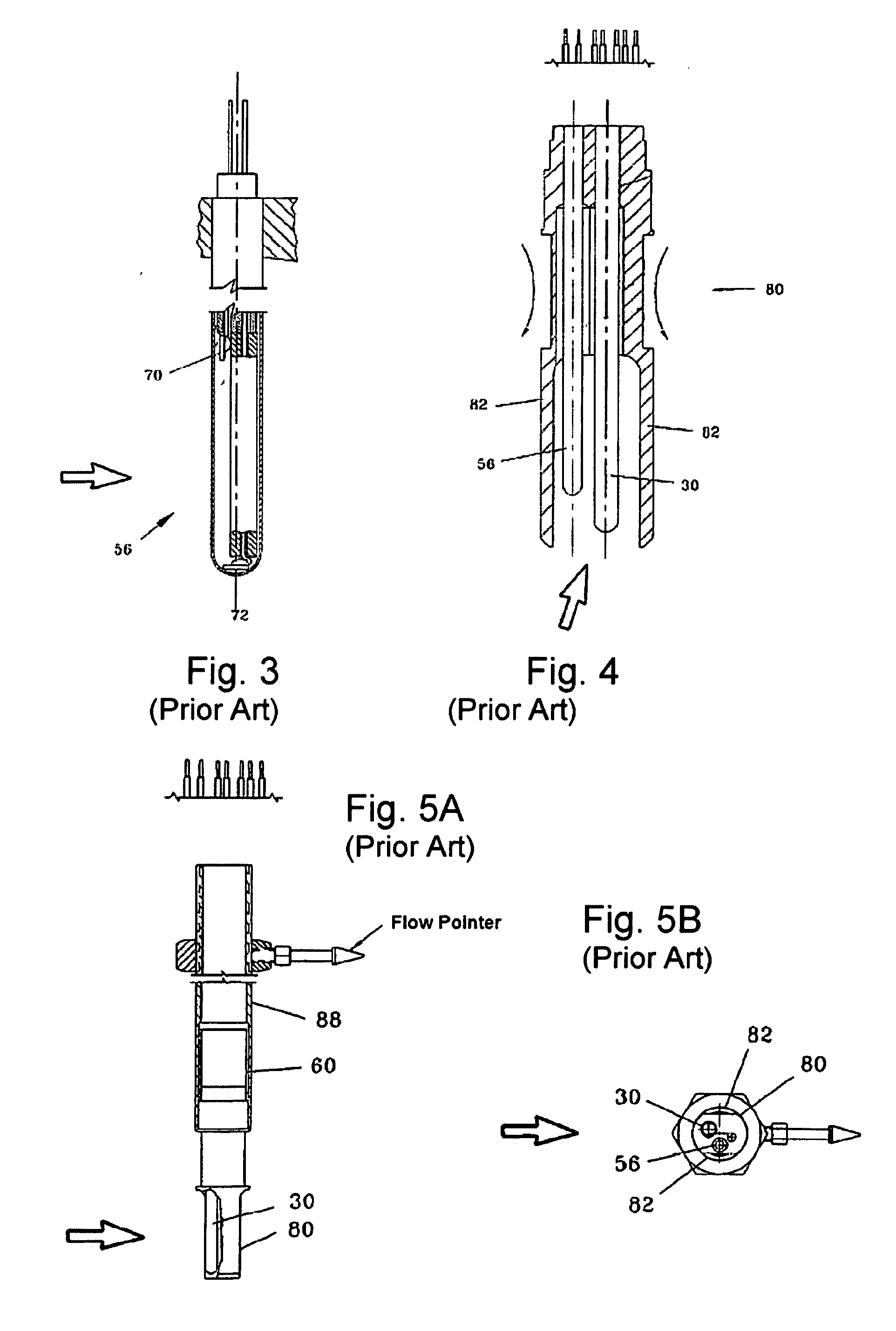Mass flow meter with solder/braze-flow secured spacer
- Summary
- Abstract
- Description
- Claims
- Application Information
AI Technical Summary
Benefits of technology
Problems solved by technology
Method used
Image
Examples
Embodiment Construction
[0039]Turning now to FIGS. 1A and 1B, these show a view of the type of temperature sensor 2 employed in the present invention. The sensor shown is a “thin film” type sensor as described above. The particular sensor shown is a Thin-Film Platinum Resistance Temperature Detector (TFPRTD) as commonly available. An active area 12 of the device is provided, over which area the TFPRTD is self-heated by current during use. Sensor 2 includes lead wires 4 connected to weld pads leading to active region 12 and covered by a glass strain relief 10. The body 8 of the sensor is made of high-purity alumina, preferably held to a thickness tolerance within about ±0.002 to 0.001 inches as commonly available. A thin layer of glass electrical insulation 14 is provided over the TFPRTD active area. Of course, the PRTD is only exemplary as other TFRTDs may be employed in the invention. For example, other thin-film RTDs optionally employed in the invention may utilize nickel or other metals for the devices'...
PUM
| Property | Measurement | Unit |
|---|---|---|
| Length | aaaaa | aaaaa |
| Diameter | aaaaa | aaaaa |
| Temperature | aaaaa | aaaaa |
Abstract
Description
Claims
Application Information
 Login to View More
Login to View More - R&D
- Intellectual Property
- Life Sciences
- Materials
- Tech Scout
- Unparalleled Data Quality
- Higher Quality Content
- 60% Fewer Hallucinations
Browse by: Latest US Patents, China's latest patents, Technical Efficacy Thesaurus, Application Domain, Technology Topic, Popular Technical Reports.
© 2025 PatSnap. All rights reserved.Legal|Privacy policy|Modern Slavery Act Transparency Statement|Sitemap|About US| Contact US: help@patsnap.com



